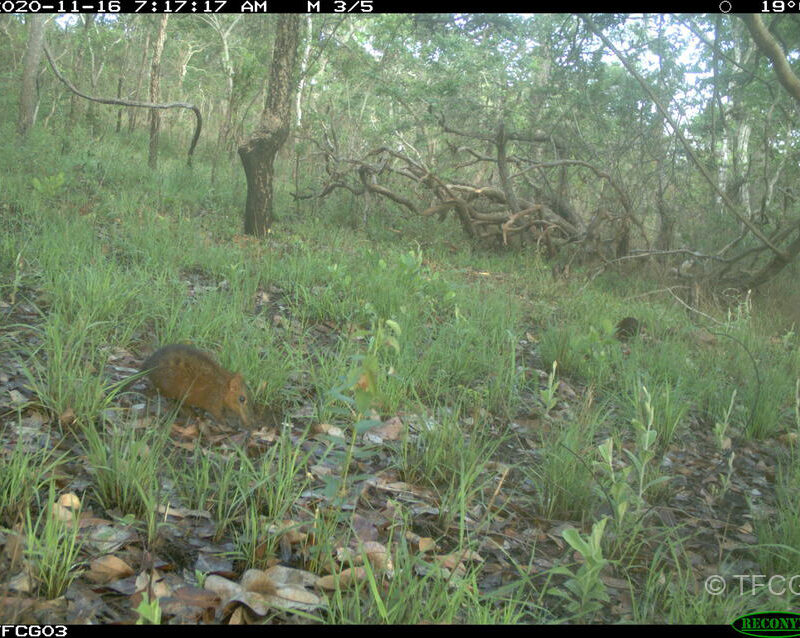Chequered Elephant Shrew
Species Data
Class: Mammalia
Order: Macroscelidea
Family: Macroscelidaidae
Scientific Name: Rhynchocyon cirnei
IUCN Red List status: Least Concern
Description
Chequered Elephant Shrew (also known as Chequered Sengi) weigh around 410-550g and can grow up to 30.5cm, with a tail length of up to 25.4cm. Their coat has dark stripes running on either side of their body, alternating with chestnut and off-white colours – giving them their chequered pattern.
With strong and long hind legs and smaller fore limbs, they use this posture to excavate small holes in the ground with the help of three long claws. Their elongated nose and tongue are used both as a sense organ and as a tool to pick up food.
Behaviour
Chequered Elephant Shrew live in pairs or small groups, and they will mate for life. The pair will defend their shared territory individually, rapping their tail or feet on the ground to alert the other members.
They have a relatively low reproduction rate, with a litter size of 1-3. Newborns will stay in the nests built from leaves on the forest floor for two weeks and will then follow the mother while she forages for leaf litter invertebrates – they leave their parents once they find their own territory and mate.


Habitat
Chequered Elephant Shrews are found only in central and southeast Africa, in the countries of Uganda, southern Tanzania, northern Zaire, northern and eastern Democratic Republic of Congo, northern and central Mozambique, north-eastern Zambia, and Malawi.
They are restricted to montane and lowland forests, closed-canopy woodlands and riparian thickets with dense leaf litter understoreys.
Threats and Conservation
Habitat loss and forest fragmentation due to human activities across their range has led to a decline in numbers, with some subspecies restricted to small, isolated populations – such as R. c. macrurus in the coastal areas of southern Tanzania.
Starting in 2021 and with support from WLT, Tanzanian conservation body TFCG will seek to create 10 reserves to protect a wildlife corridor home to Chequered Elephant Shrews – preserving the coastal forest leaf litter that is so key to these shrews.
